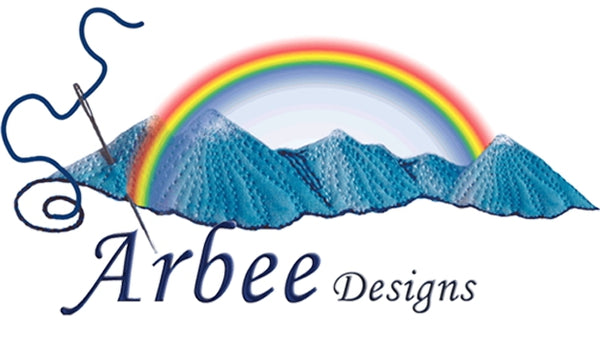I have a lot of quilters asking me if my BOW flower blocks are suitable for hand applique and the simple answer is Yes even though the patterns are all written for machine applique. In fact, almost all of my machine applique patterns can be easily adjusted for needle turn applique due to the way I present my patterns. So today I wanted to share with you how simple that can be. I'll use some of my flower blocks to demonstrate.
All my flower blocks include a layout line drawing of the full block as well as individual templates of each piece. The individual templates are reversed ready for drawing onto fusible webbing, which of course, isn't required for hand applique. However, you can still use either the layout line drawing or the individual templates to make your hand applique templates.
What will you need? The only difference other than the obvious applique needle and thimble instead of sewing machine in supplies is that you will need some sort of template materials instead of fusible webbing. This could be light-weight card (such as a cereal box) and a glue stick, or template plastic. Freezer paper can also work. Of course, if you are an experience hand appliquer, you might not even need to make templates but instead draw directly from the pattern onto fabric.
First up, you should look at all the pieces and determine if the edges are suitable to hand applique. Most of my flower blocks will not need any adjustments at all and if this is the case, skip to the next section. Some intricate pieces may need to be simplified a little especially if you are a beginner. This can be easily done by drawing directly over the existing lines on the template page. I'll use my daffodil block as an example of this.
Looking at the templates, I can see all the pieces can easily be hand appliqued without any adjusting except maybe the end of the trumpet as it is very wavy. This waviness may be difficult to applique by hand (it totally depends on how experienced you are) so I would smooth out those curves slightly.

If you feel some of the stems are a little narrow for hand applique, you can substitute them for narrow bias binding (lesson for creating bias binding) as shown with these daisies in my Starlit Daisies pattern.
Once you have made any adjustments, you are ready to make your templates.
Using My Individual Templates: (easiest made with light-weight card or freezer paper)
First, let me explain how my individual templates are drawn. Each template includes a seam allowance ONLY where another piece overlaps it. The rest of that template does not have a seam allowance as it is not required for fusible web applique. However for hand applique, we do need a seam allowance for the whole section. This is a very easy fix. I will use the small pansy in my pansy block to demonstrate.
When you print out the individual template page, glue it to your light-weight card (if using a cereal box, I suggest gluing it to the printed side). Once the glue is dry, cut out all the pieces around the seam lines removing any seam allowance that was included on the template. You will add seam allowance around the entire piece as you cut out the fabric. You may want to transfer the numbers to the card side of your template, but that's totally up to you.

My video will show you exactly how I did that....
Now that you have your templates, you can place each on the appropriate fabric printed side down and draw around them. This drawing is the seam line so when you cut out the fabric be sure to add a small seam allowance. Usually about 1/4" - you can trim this back a bit more as you begin to stitch or as necessary.
Using the Layout Plan: (easiest made with template plastic)
The layout plan is a line drawing of the block when it is finished. You will notice some pieces extend under others and there are no seam allowances showing. The only thing you need to do is trace all the shapes onto template plastic leaving space between each section. Be sure to label each section too.
In some places there will be another piece directly on top of another. For example on some of the petals in the larger pansy. I've illustrated this in yellow on the image below.

For these petals, you should cut the 'under' petal out as a whole to include the inner piece (both the blue and yellow sections above) and then a separate section for the inner piece. Still draw in the line where the inner petal sits on the larger section for easy placement. (The excess fabric can be trimmed back when the pieces are attached)

Once you have all your templates drawn, you can cut them out. Remember these are right side facing templates so no need to flip them over. Place them on the appropriate fabric and draw around them. When cutting out each piece, be sure to include a small seam line as I described above.
Now you are ready to hand applique your beautiful flowers. I have tutorials for hand applique in our free lesson pages if you need them - Happy Quilting!





